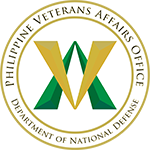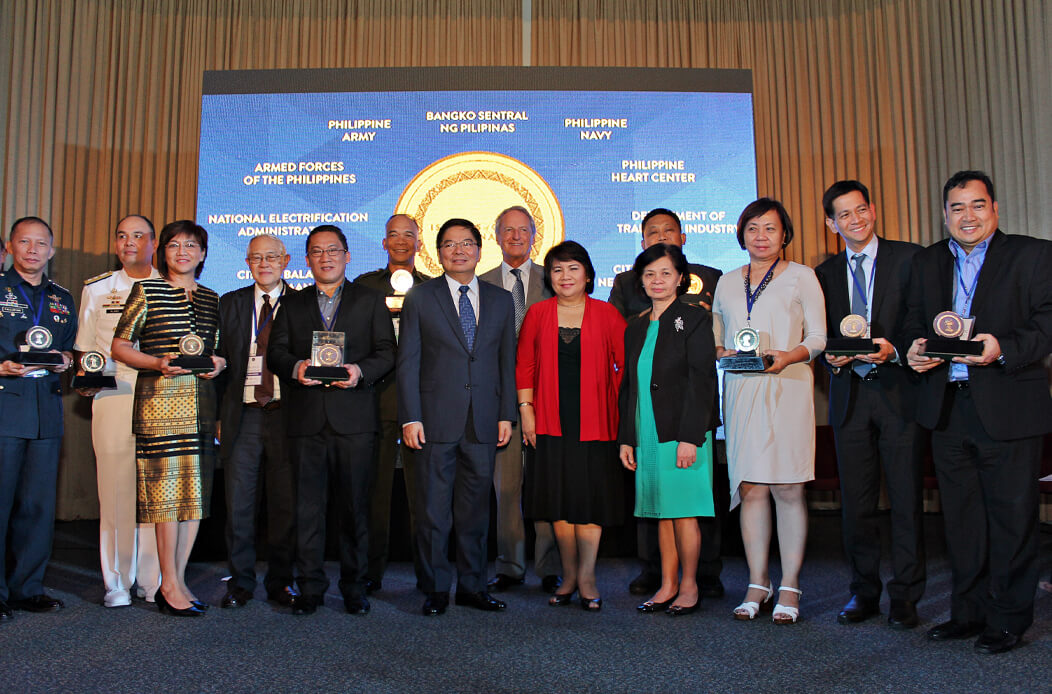The Performance Governance System
“Governance is as necessary as anti-corruption. It is what builds up rather than tears down,
restores rather than removes,
empowers rather than overthrows.”
— Dr. Jesus P. Estanislao, Founder, Institute for Solidarity in Asia
PGS vs. The Balanced Scorecard
The PGS is a framework patterned after the Balanced Scorecard of the Harvard Business School, where government agencies and local government units are rated based on their development goals and sustainable governance mechanisms.
While Balanced Scorecards are used mainly by private and profit-driven organizations, the PGS, tailored for the Philippine setting, is used by public and mission-driven institutions.
Harmonization of the PGS with Other Frameworks
Unlike other management frameworks that primarily focus on improving operations alone, the PGS is a tool that can be used to harmonize the day-to-day operations of an organization with the transformative actions introduced by the strategy. These processes include performance assessments, linkage to incentives, and even budgeting processes and other existing systems like the ISO to the identified long-term goals of the organization.
Allowing the PGS strategy to develop as a complementary management system with mandated functions helps organizations progress in one solid direction. Beyond operational effectiveness and complementing process improvements, PGS puts a premium on the strategic impact that an organization can make, given its mandate.
Partner Testimonials

NATIONAL GOVERNMENT AGENCY
Philippine Veterans Affairs Office
In November 2019, only five years after embarking on its transformation journey, the Philippine Veterans Affairs Office (PVAO) successfully passed the Institutionalization stage of the Performance Governance System (PGS) and bagged the Gold Trailblazer Award for its accomplishments and excellent execution of its strategy through good governance.
The agency was also recognized as an Island of Good Governance (IGG), the official recognition program for milestone achievements in the use of PGS, and considered an exemplar in governance and reform, setting high standards in public governance in the country.

HOSPITAL
Philippine Heart Center
The Philippine Heart Center, one of the country's hospitals to uphold the highest standards for cardiovascular care, completed the fourth and last stage of the PGS in 2015, inspiring other health institutions in their journey of transformation.
Through the PGS, the PHC was internationally recognized for its best practices in hospital management by the Asian Management Hospital Awards, which recognizes hospitals in Asia that develop exceptional programs.

LOCAL GOVERNMENT UNIT
City Government of Mandaue, Cebu
Mandaue City, a first-class, highly urbanized city in the Central Visayas, attained the full-fledged PGS seal back in 2015. It was also recognized as an Island of Good Governance for its success in bringing local businesses together to showcase high-value products under the #iammandaue brand.
"With PGS, you empower people in the organization to contribute their ideas,” Mandaue Vice Mayor Carlo Fortuna said in an interview with ISA. “We got everybody on board, which resulted to these breakthroughs we have seen in Mandaue."
Primary Interventions
Strategy Formulation
In Strategy Formulation, the organization works with ISA to integrate existing plans into a cohesive long-term strategy that seeks to level up the delivery of the organization’s mandate. This session is dedicated to crafting the Strategy Map and Governance Scorecard – the guiding frameworks which define and detail the overall strategic direction of the organization.
The online intervention will be divided into two sessions – (1) Strategic Positioning and (2) Strategy Formulation, and will cover the validation of the organization’s multi-year deliverables and the articulation of its strategic objectives.
Clean-up
The Clean-up Session is dedicated to polishing the initial Strategy Map, Enterprise Scorecard, and Strategic Deliverables to ensure the readiness of the strategy for execution.
Cascading
In this intervention, ISA seeks to capacitate the organization’s department heads through a series of Cascading Sessions to ensure their unit’s progression towards the fulfillment of their deliverables and targets outlined in their scorecards.
OSM Capacity Building & MSGC Management
In this session, ISA trains the members of the organization’s Office for Strategy Management (OSM) and orients them on how to properly execute, monitor, and sustain their organization’s strategy, as well as manage their Multi-Sector Governance Council (MSGC).
This intervention covers an online discussion of the roles and responsibilities of the OSM in the implementation of each PGS element. It discusses the mechanisms for conducting strategy reviews and process coaching for units, and the approaches to successfully managing the MSGC.
Pre-Revalidas
The Pre-Revalida prepares an organization for their upcoming Public Revalida, where they will present the progress and milestones of their strategy. In this session, the organization delivers their revalida presentation in order to obtain feedback and recommendations from a mock panel which includes members of ISA’s management committee and selected associates. The discussion is then documented for the organization to use in refining the narrative and the delivery of their final revalida presentation.
Public Revalida
The Public Revalida is a platform where organizations present their stories of transformation and progression in the PGS pathway before a specially convened panel of good governance and field experts. Presenting partners will be given honor in an awarding ceremony where they will be commended for their achievements.
Organizational Assessment
For Initiation
The Organizational Assessment, evaluates the maturity of the organization’s strategic readiness and governance mechanisms based on the parameters of the PGS. This will be conducted through an online survey and series of focus group discussions and interviews. This assessment aims to provide baseline data for the organization to consider as it progresses to the next stages of the PGS Pathway.
Spot Audit
For Compliance
The Spot Audit checks the progress of the organization’s strategy vis-à-vis the strategic contributions of selected key departments and units. It aims to validate the presence and maturity of the essential elements of the PGS critical to the execution and sustainability of the organization’s strategy at a particular PGS Stage. For this intervention, online group discussions and interviews are conducted to assess how the organization has facilitated strategy and operations reviews.
Strategic Readiness Test
For Proficiency and Institutionalization
The Strategic Readiness Test (SRT) evaluates the maturity of the organization’s strategic readiness and governance mechanisms using the parameters of the PGS. It seeks to provide data for the organization to consider as it progresses to the Proficiency or Institutionalized Stage of the PGS Pathway.
This intervention covers the conduct of the strategic readiness test, which is assessed in 5 components: (1) an online survey, (2) focus group discussions, (3) interviews, (4) spot audit, and (5) documents review. This step determines if the organization will move on to undergo the Governance Mechanisms Assessment or Third-Party Audit.
Third Party Audit
For Proficiency & Institutionalization
The Governance Mechanisms Assessment is conducted by a third-party auditor to evaluate the maturity of the identified governance elements and the integrity of the breakthrough results.
The program design covers the conduct of the Third-Party Audit comprising two phases: (1) Quantitative Assessment and (2) Qualitative Assessment. A comprehensive report resulting from the audit gives an overview of the progress of the organization, and with support from the ISA Board of Trustees, determines the advancement of the organization to the Public Revalida.


For non-partners, you may send an email to the Program Management Unit at [email protected] to learn more. Meanwhile, existing partners are encouraged to reach out directly to their respective program coordinators.
Supplemental Interventions
Supplementary Interventions
- Risk Management
- Organizational Development
- Operations Planning
Frequently Asked Questions
GENERAL QUESTIONS
PGS PATHWAY
The PGS pathway is composed of the following four stages: (1) Initiation, which focuses on strategy design; (2) Compliance, which focuses on strategy execution; (3) Proficiency, which focuses on monitoring and evaluation of the strategy; and (4) Institutionalization, which focuses on the attainment of breakthrough results.
Specific hallmarks of each stage have also been identified to reflect the ideal maturity of the PGS elements in the organization.
All PGS partners have to undergo a public revalida, an exercise in reporting before a chosen panel of governance experts, before being conferred into a PGS stage.
Furthermore, PGS organizations vying for the Proficiency Stage and Institutionalization Stage must pass an external audit before they can be recommended to undergo the public revalida.
ENROLLING IN THE PGS
All PGS partners have to undergo a public revalida, an exercise in reporting before a chosen panel of governance experts, before being conferred into a PGS stage.
Furthermore, PGS organizations vying for the Proficiency Stage and Institutionalization Stage must pass an external audit before they can be recommended to undergo the public revalida.
PGS ELEMENTS
There are nine (9) PGS Elements: (a) Basic Governance Documents composed of the strategy map, governance scorecard, and the list of strategic deliverables that are all anchored on a strategic position; (b) a PGS Core Team who are the champions of the strategy; (c) Cascading Framework to align everyone to the strategy; (d) Office for Strategy Management who oversees the implementation of the strategy; (e) Strategic Performance Assessments for monitoring and evaluation at the level of the enterprise and the units; (f) a Multi-sector Governance Council to formalize the external partnership; (g) Governance Culture to harmonize systems, processes, and values with that of the strategy; (h) Governance Sharing of the advocacy internally and externally; and (i) Breakthrough Results that represent the strategic targets that have made an impact to the stakeholders.
Governance sharing pertains to promoting good governance advocacy internally and externally. Internally, PGS partners are expected to come up with a robust performance evaluation system that allows the organization to assess and document the best practices in units and/or individuals. It is ideal that these best practices are replicated across the institution to foster an environment that is ripe for transformation. Externally, the PGS partner can capitalize on the network of its MSGC or engage with other private or public sector institutions to share its best practices.
Different platforms such as governance forums, simple roundtable discussions, features in newsletters, or videos can be used to promote the advocacy.
PGS MANAGEMENT TEAMS
A PGS Core Team is needed because the strategy will only be sustained if it has champions in key operational positions. As members of the Core Team, these individuals are involved either as the architects of the strategy, as the measure or initiative owners, or as the support group of the Office for Strategy Management.
As previously mentioned, organizations undergoing the PGS do not have to formally create a separate PGS Core Team if it already has a similar group that can function as such. In most PGS partners, the management committee, which represents the unit heads, is convened as the Core Team, together with other key individuals identified as the members who can rally the units and individuals towards transformation.
OTHER PROGRAM OFFERINGS
Apart from PGS interventions, ISA also has two institutional events: (a) the Public Governance Forum, where institutions showcase their progress and milestones in the governance pathway, and (b) Governance Boot Camp, where delegates are trained and capacitated to install the PGS in their respective organizations.
ISA also launched the Islands of Good Governance, which is the official recognition program for milestone achievements in the use of PGS. It honors public sector institutions as exemplars of reform and beacons of hope, lighting the way for many others to follow.
